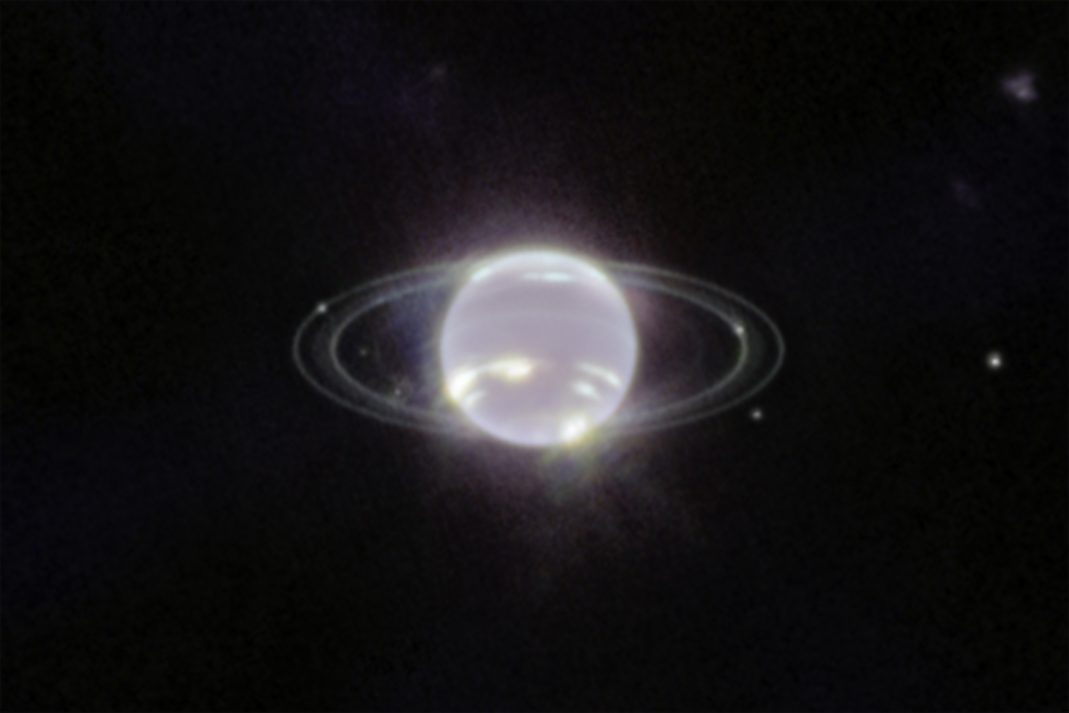NASA’s James Webb Space Telescope continues to capture some of the most dazzling images of the year within our galaxy and beyond. The deep space telescope recently caught the clearest view of Neptune’s rings in more than 30 years. Using data collected from infrared light, Webb’s cameras reveal the ice giant in a whole new light.
Dubai Architects Ideate a Futuristic Ring Around the Burj Khalifa
Some of Neptune’s rings had not been detected since NASA’s Voyager 2 observed Neptune during its flyby in 1989. While Neptune typically appears blue due to atmospheric methane, Webb’s infrared camera shows the planet in a whiter hue. The beautiful lines of light appearing on the planet’s surface are high-altitude methane-ice clouds reflecting sunlight.
In addition to several bright rings, the Webb image also clearly shows Neptune’s fainter dust bands. Though Neptune is approximately 2.8 billion miles from Earth, Webb’s remarkably stable and precise image quality allows the telescope to see these very faint rings so close to the ice planet. Further, the image also shows seven of the 14 moons orbiting the planet. NASA explains that the large moon Triton appears so bright due to the frozen, condensed nitrogen covering it which reflects 70% of light. This gives Triton the appearance of a teal snowflake in the upper left of the image below.

Lastly, in case you missed it, Apple Launches iOS 16 Featuring Lock Screen Personalization and New iMessage Controls.









